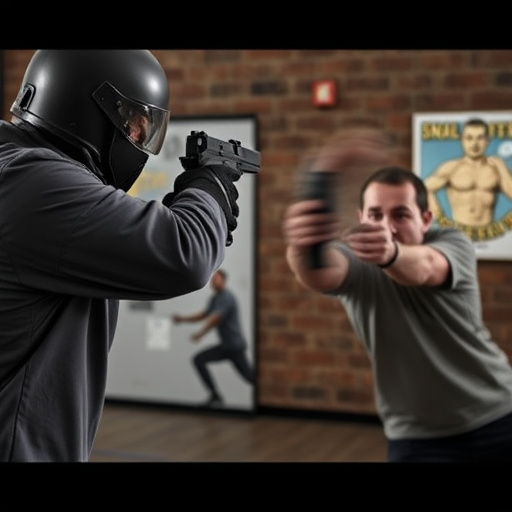Understanding voltage penetration is crucial when considering the effectiveness of thick clothing as a shield against stun gun shocks. Clothing material and thickness significantly affect electrical current flow, with insulators like cotton offering better protection than metals. For self-defense, individuals should buy easy-to-carry and use stun guns, considering fabric properties and thickness for optimal impact. Modern stun guns resemble everyday items, are simple to operate, and provide a non-lethal defense option for law enforcement, security, and civilians in high-risk situations. Choose compact, lightweight models with clear instructions, safety guidelines, and features like LED lights for enhanced protection and quick deployment during emergencies.
Voltage penetration through thick clothing is a critical factor in personal safety, especially with the growing popularity of stun guns. This article delves into the science behind how voltage travels through different fabrics and materials, offering insights into the effectiveness of thick clothing as a barrier. We explore the role of material composition and thickness in electricity flow, providing a comprehensive guide to stun guns, focusing on buying easy-to-carry and use models for enhanced personal safety in various scenarios.
- Understanding Voltage Penetration: How Effective is Thick Clothing?
- The Role of Material and Thickness in Electricity Flow
- Stun Guns: A Quick Defense Option for Personal Safety
- Choosing the Right Stun Gun: Factors to Consider for Ease of Carry and Use
- Real-World Scenarios: When and Where to Deploy a Stun Gun
Understanding Voltage Penetration: How Effective is Thick Clothing?
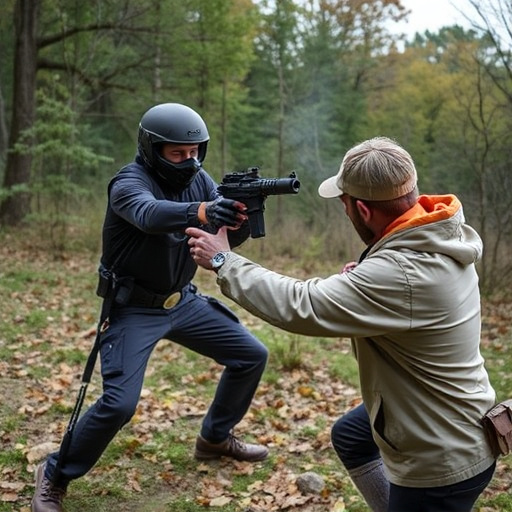
Understanding Voltage Penetration: How Effective is Thick Clothing? In today’s world, personal safety is a top priority for many individuals, leading many to consider purchasing stun guns that are easy to carry and use as a deterrent against potential threats. One important factor in assessing the effectiveness of self-defense tools like stun guns is understanding how voltage penetrates through different materials, including thick clothing. While clothing can provide a certain level of protection, its ability to shield against electrical current varies significantly based on factors such as material composition and thickness.
Thick clothing, while offering some barrier against physical harm, may not be as effective against high-voltage charges. Stun guns emit electric shocks designed to disrupt an attacker’s muscles, causing them to temporarily lose control. However, if the voltage is not able to penetrate the clothing effectively, the stun gun’s impact could be significantly reduced or even non-existent. Therefore, it’s crucial to consider the material and thickness of your clothing when assessing its ability to protect against electrical shocks from stun guns.
The Role of Material and Thickness in Electricity Flow
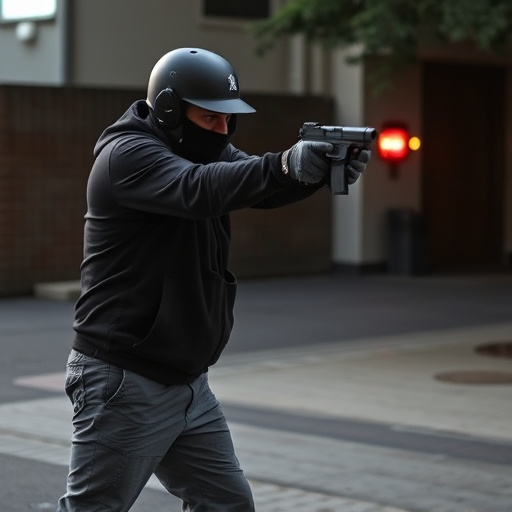
The role of material and thickness is pivotal in understanding how electricity, specifically high voltage, traverses through clothing. Different fabrics have varying levels of conductivity, with certain materials like metal allowing electric current to flow freely, while insulators such as cotton or wool impede its passage significantly. The thickness of the fabric acts as a barrier, increasing resistance to electrical penetration. Thicker garments provide more protection by effectively blocking or diverting electrical currents, making them ideal for safety purposes when facing potential threats like stun guns, where one would want to buy stun guns that are easy to carry and use, ensuring personal security.
In the context of self-defense tools like stun guns, material science plays a crucial role in design and effectiveness. The right combination of conductive and insulative properties in clothing can either enhance or hinder the penetration of voltage, directly impacting the weapon’s performance. Understanding these factors is essential for both consumers and manufacturers, as it guides the development of protective gear and strategic choices when purchasing stun guns for personal safety.
Stun Guns: A Quick Defense Option for Personal Safety
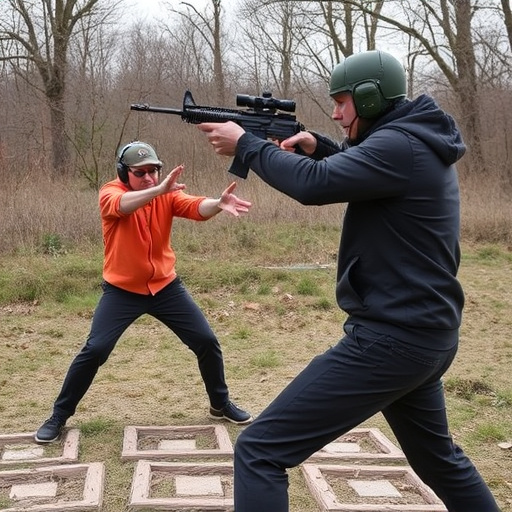
Stun guns, also known as electronic control devices (ECDs), offer a quick and effective defense option for personal safety. These non-lethal weapons are designed to incapacitate an attacker temporarily through electrical impulses, providing users with time to escape or seek help. With modern stun guns, you can buy models that are easy to carry and use—often resembling flashlights or pocket knives—making them convenient for everyday carry.
Unlike traditional firearms, stun guns don’t require extensive training to operate safely and effectively. They emit a strong electrical charge that disrupts muscle control in the target area, causing temporary paralysis and pain. This feature makes them ideal for self-defense situations where the primary goal is to disable an assailant long enough to get away or call for assistance.
Choosing the Right Stun Gun: Factors to Consider for Ease of Carry and Use

When considering a stun gun for self-defense, choosing one that’s easy to carry and use is paramount. Look for compact designs that fit comfortably in your hand or pocket, ensuring discreteness while still offering powerful protection. Weight is also crucial; lighter models are easier to handle during emergencies. Additionally, consider features like simple activation mechanisms, like a single trigger, to make usage intuitive even in stressful situations.
A user-friendly stun gun should come with clear instructions and safety guidelines. Some models feature LED lights or laser pointers for better visibility and targeting. Also, think about the power output; higher voltage can be more effective but may require more training to use safely. Always opt for reputable brands that offer warranties, ensuring you buy a product of proven quality.
Real-World Scenarios: When and Where to Deploy a Stun Gun
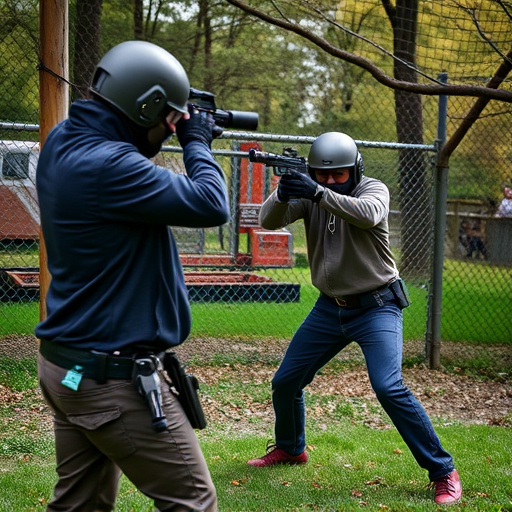
In real-world scenarios, deploying a stun gun can be a life-saving measure in various situations. For instance, individuals patrolling remote areas or working late at night in isolated locations can benefit from stun guns as a non-lethal self-defense mechanism against potential assailants. These weapons are particularly useful in high-risk professions like law enforcement, security guards, and even for personal protection by civilians. When choosing a stun device, opt for models that are compact, lightweight, and easy to carry—such devices often pack a powerful punch while maintaining simplicity in operation, ensuring users can deploy them swiftly during emergencies.
Additionally, stun guns can be valuable tools for individuals who find themselves in dangerous situations while traveling or outdoor adventuring. Their portability allows users to keep them readily accessible, providing peace of mind and an extra layer of security when navigating unfamiliar territories or high-crime areas. As with any self-defense tool, proper training is essential to ensure effective and safe use; however, the ease of carrying and operating modern stun guns makes them practical choices for personal protection in diverse real-world scenarios.
While thick clothing can provide some protection against low voltage, it’s crucial to remember that higher voltages can penetrate significantly. In real-world scenarios, especially when considering personal safety, buying stun guns that are easy to carry and use becomes paramount. Understanding the role of material and thickness in electricity flow empowers individuals to make informed choices for self-defense, ensuring they’re prepared in various environments.
